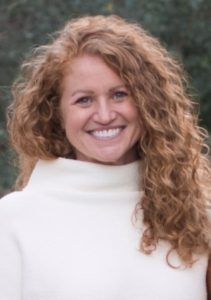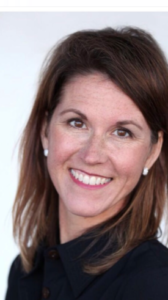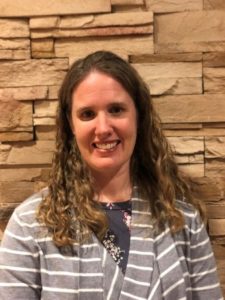
Sarah Anderson
1. What prompted you to run for school board?
The learning climate has become intolerable for many of our children and I believe we as parents and educators can be more creative and proactive to finding solutions to the problems we face. I am running to effect change and implement new policies to mitigate bullying, to increase public, parent and student participation in the decision making process, to establish and advance more public-private partnerships and bring a more innovation to the way the school board works.
2. What would your priorities be as a member of the school board?
Mitigate bullying, adopt best practices that are working in other school districts across the country in education innovation, budget successes and increase federal and local funding. Introduce telemedicine into our Title 1 schools utilizing the in-school clinics we already have as home base for these services, this could also include counseling services. We are under staffed in many areas and this includes school counselors.
3. What experience and skills would you bring to the position?
I am a newcomer to the scene and if entrusted to serve on the school board I will continue to advocate for the most vulnerable. My background in the healthcare industry positions me quite well to navigate the way to bring telemedicine into our lower income schools. Mental health is a huge issue in our schools and across the country, bringing more opportunities for our children to have access to healthcare is a top priority. Partnering with the private sector and building those relationship will help keep costs down on a budget that is already stretched too thin.
4. There were many bills during the last South Dakota Legislative Session that were focused on public schools. What are your thoughts on local control versus state and federal control when it comes to public schools?
Local control is best, not every school has the same issues and circumstances and we have policies in place to address those issues at the local level. Federal and State funding requires some regulation; when federal overreach happens our state government can step in. We need to keep political agendas out of our schools.
5. LEAD’s mission is centered around developing more women leaders in South Dakota. Please name a woman in a local or state leadership position that you admire and explain why.
I admire Theresa Stehly for her
tenacity and transparency. She has been a community activist and is
committed to citizen involvement, open government and fiscal responsibility.
Theresa has kept to her campaign promises, that is rare in today’s
political world.
6. LEAD’s core values are Inclusion, Civility, Action, Social Justice, and Empowerment. Please describe if and how you would integrate any of these values into your work as a member of the Sioux Falls School Board.
I would passionately advocate for inclusion of all children in our school system. This means every child has the right to receive a public education, free from harassment regardless of their socioeconomic status, gender identity, culture and social beliefs. Children learn what they live and as adults we can do better in our behaviors and actions to be better role models. The #cool2bkind is meant for adults as much as it is our children. My platform lays out how we can empower our kids to be the leaders of a kindness movement, not something controlled by the administration or teachers. We can facilitate and give them innovative tools to help guide them but the success will come from student leadership.

Nan Baker
1. What prompted you to run for school board?
The strength of our schools continues to make Sioux Falls a top place to live, work and raise a family. I believe our schools, families, staff, and students are the city’s greatest assets for future success. Having four children in the district motivates me to serve on the Sioux Falls school board. My experience in budgeting, long range planning, volunteerism, leadership roles, allows me to effectively work with school district stakeholders (students, parents, school staff, taxpayers, business community and non-profits) by sharpening our focus and building on continued momentum.
2. What would your priorities be as a member of the school board?
Last spring I co-chaired the Facilities Task Force which brought forward the $190M bond referendum passed by the school board and district voters. My priority is over-seeing that set of recommendations. I would also carry forward the task force recommendation to adhere to a 24.3:1 student to teacher ratio. That means maximum high school enrollments should be 1,800 students, middle school 1,000 and elementary 600.
3. What experience and skills would you bring to the position?
My community leadership experience has let me work at the strategic level on many long range plans and budgets. My skills included, teamwork, willingness to learn and effective communication.
4. There were many bills during the last South Dakota Legislative Session that were focused on public schools. What are your thoughts on local control versus state and federal control when it comes to public schools?
Education is primarily a State and local responsibility.
5. LEAD’s mission is centered around developing more women leaders in South Dakota. Please name a woman in a local or state leadership position that you admire and explain why.
Dr. Allison Suttle has range. After a decade of delivering babies, she went back to school to earn her MBA and eventually transitioned into Sanford’s Chief Medical Officer. She tackles big picture healthcare issues with a physician’s voice. That is important given the work to be done around healthcare delivery.
6. LEAD’s core values are Inclusion, Civility, Action, Social Justice, and Empowerment. Please describe if and how you would integrate any of these values into your work as a member of the Sioux Falls School Board.
I like to work within systems specifically process. Last spring I was part of answering how our school district would tackle growing enrollment. The process put together a diverse group of 30 community members to evaluate the needs of the district, consider feedback from staff group and community listening sessions and propose solutions.
The task force worked separately from the board and district administration. The process was open and transparent. In fact, we incorporated many of the core values listed above. Dialogue was civil and brought about action. Task force members were empowered to contribute.
We rallied behind public school education. To a certain extent education is social justice. Education promotes opportunity. Social justice says people should have equal access to opportunity.

Carly Reiter
1. What prompted you to run for
school board?
I was first
elected to the School Board in 2013 and am finishing my second
term. I have enjoyed learning more about what goes on in our
schools, seeing the success of our students and supporting our teachers,
administration and staff members. Sioux Falls is a growing community
and is so fortunate to have the amazing educational opportunities that we
do. I want to continue to serve the community as we build and open
new buildings, start new educational programs and work to prepare every student
for long term success after high school-whatever path it is that they choose to
take.
2. What would your priorities be as a member of the school board?
Two of the topics that I am passionate about are Workforce development and Social Emotional Learning. Our job is to prepare students for a changing world-for some that is college, for others is work or a technical education. Our community has a large need for workers in the trades and we are fortunate to have a great school like Southeast Technical Institute in our community to support that. Not every student is college bound and we don’t need every worker to be college educated. By helping students to find their strengths and introducing them early on to a variety of careers we can help them be best prepared for their post high school plans.
Social Emotional Learning is something that we are working on integrating into all of our classrooms. Students are coming to school with a variety of personal traumas and the way that they are learning is changing. It’s important that we recognize that and adapt our instruction methods and objectives to meet the needs of our students. We need to teach our students about empathy and understanding, setting goals for themselves, managing their emotions and making positive decisions. Incorporating these skills will help them to develop life skills that will positively impact the rest of their lives and the contribution that they can make to our community.
3. What experience and skills
would you bring to the position?
Having served
for two terms already, I am ready to continue on as a Board Member using the
knowledge and experience that I have gained the last 6 years. I have
great relationships with district employees, retired teachers, community
members and business leaders thanks to attending Sioux Falls Public schools
from kindergarten through 12th grade and serving on a variety
of committees. I bring Board experience, but fresh ideas as well. I
have served on the following committees: Calendar, Safe and Secure
Schools, Sioux Falls Education Foundation, Policy Review, PATH, and the
Workforce Development/Education committee through the Sioux Falls Chamber.
4. There were many bills during
the last South Dakota Legislative Session that were focused on public schools.
What are your thoughts on local control versus state and federal control when
it comes to public schools?
I believe that
in most cases local control makes more sense than state or
federal. Districts know their students, families and communities
best and should be able to make decisions, implement programs, and create
policies that reflect the values of the community they serve. Too
often there are federal or state decisions that are made which require
districts to meet a requirement, but no funding to support that decision. The
burden is then left to the local communities when it may not be in the best
interest of the students and families that they serve. As the
largest school district in the state, we often have unique needs that differ from
others so having a one size fits all approach is not common sense.
5. LEAD’s mission is centered around developing more women leaders in South Dakota. Please name a woman in a local or state leadership position that you admire and explain why.
I was so pleased to see Erin Healy’s campaign for the House last year. She is young, full of energy and passionate about the same topics that I am. As a nurse, I understand the need for all to have access to healthcare and the impact (both to health and finances) of preventative care. I watched as she bravely fought for the Early Learning Advisory Council to bring attention to the much needed topic of preschool and early learning in our state. She is respectful, well spoken and truly had the best interest of the people of South Dakota as she introduced legislation in Pierre. It can be intimidating as a young female, new to a role with so much to learn and I feel like she led with confidence and grace. I am excited to see what she does in the future and what other leadership positions she holds. She is a great example and an inspiration to young women on the reasons it is so important to use your voice to make a difference.
6. LEAD’s core values are Inclusion, Civility, Action, Social Justice, and Empowerment. Please describe if and how you would integrate any of these values into your work as a member of the Sioux Falls School Board.
All of these are very important parts of leadership and public service. We have the privilege of educating all students in Sioux Falls, regardless of socioeconomic background, race, religion, sexuality, etc. This means that we advocate for those who can’t do so for themselves and make decisions that are in the best interest of our students. Public meetings are places to empower students, parents and community to learn, engage and participate in the business of educating our students. I encourage the participation of parents and students on committees that are making decisions about what goes on in our schools and classrooms. It’s important to include the stakeholders when changes and decisions are being made so that the final product reflects one that will be successful in our schools.
Lora Hubbel
Lora Hubbel declined to participate.
2019 Election and Voter Information
Voting Information for 2019 Election Day – May 21, 2019
The District will use 13 vote centers in the May 21, 2019 annual school board election. Registered voters may stop at any of the 13 polling places on election day to cast their ballot. Two School Board members terms expire in July. There will be two school board member positions on the ballot. Vote Centers are open from 7:00 am to 7:00 pm on May, 21, 2019.
Early voting will begin on Monday, May 6, 2019, Monday through Friday, from the hours of 7:30 am – 5:00 pm at the Instructional Planning Center (IPC) 201 E. 38th Street.
For additional information on the 2019 Sioux Falls School Board election, visit https://www.sf.k12.sd.us/our-district/elections-school-board/election-and-voter-information-current
